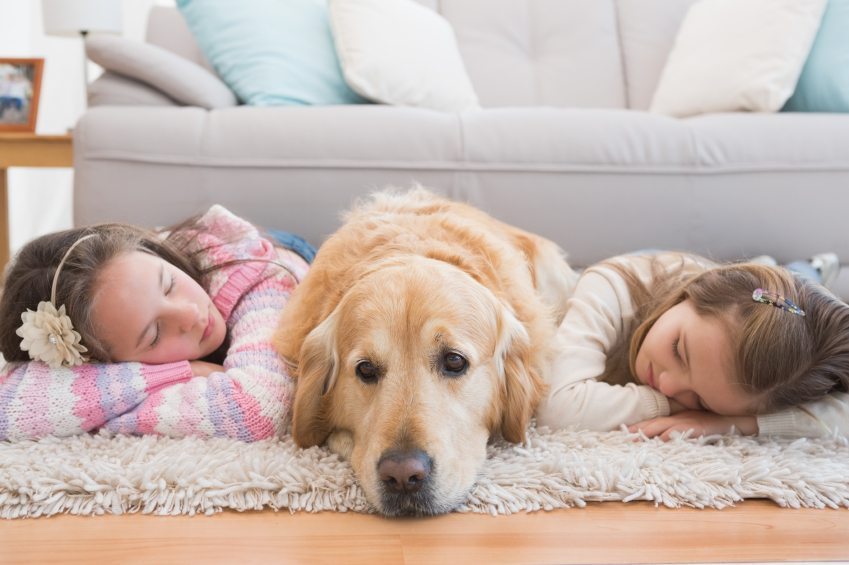
There are so many advantages to having pets in the house, but especially for your children. A pet does wonders for your child’s cognitive, social and emotional development not to mention the what mans best friend does for you child’s self esteem. While your child learns more about caring for another creature, you have the responsibility of caring not only for your new pet but for your child. Use these helpful tips to create a happy, healthy, safe environment for all the adorable little ones in your life.
You’ve decided a new pet is just what you and your child need. Choosing the right pet can make all the difference in the comfort of your home after you visit the shelter. Ask yourself some important questions. “How much time can I devote to the new member of our family?” “How much responsibility can my child take on?” Most importantly, “what allergies does my child have to animals?” There is nothing worse than your child falling in love with a pet that makes them sick. Once you have answered these questions, you can better research pets that will suit your family.
I Can Take Of It By Myself!
You feel confident that your child can take care of their new cuddly companion. They may have even proven to you their ability to take care of the pet themselves. Despite this fantastic achievement, it is important that you never leave your child alone with the new pet. Supervision is key when developing good habits and healthy interaction between your child and their furry friend. It only takes a few seconds away from your child for an interaction to go from play to pain.
Just like children, pet need boundaries in order to grow positively. Training your pet is key in how they interact with the family and how you maintain order in the house. When training the pet yourself, use a leash to reinforce your basic commands, “sit, stay” or “lay down.” Keeping them within the length of the leash maintains your control and forces them to stay close and obey. This goes for the dinner table as well. Pets can get sick being fed food from the table and by allowing them to eat scraps, you are giving them permission to eat your food. Protect your children from the aggressive appetite of a pet by making it clear that your child’s food is not theirs.

Respect the Paw
During your training, establish pet “zones.” A pet may be allowed in the living room, but not in a child’s bed. Establishing a pet free zone takes consistent discipline. Do not be afraid to say “OFF” if the pet gets on the bed. As soon as you let them get on the bed or any other pet free zone, they are likely to do it again. Though psychologically comforting, it may not be the best idea to let the pet sleep with the child – especially if the pet is feeling ill – so establish in waking hours that some spaces are not for them. Putting up extra baby gates can help create the barrier or zone but if this feels like a big commitment, reach out to a professional trainer.
In the same way that some “zones” are only for humans. Some things are only for your pet. Teach your child to respect your pet’s zone and this will go a long way in keeping them safe. An example of a pet “zone” would include your pets good bowl, litter box or beloved toys.
A pet is part of the family. If you treat them as such, with respect, compassion and healthy boundaries, there is no reason why you shouldn’t have a safe home for the whole family to enjoy.
Photo Credit: istockphoto.com









